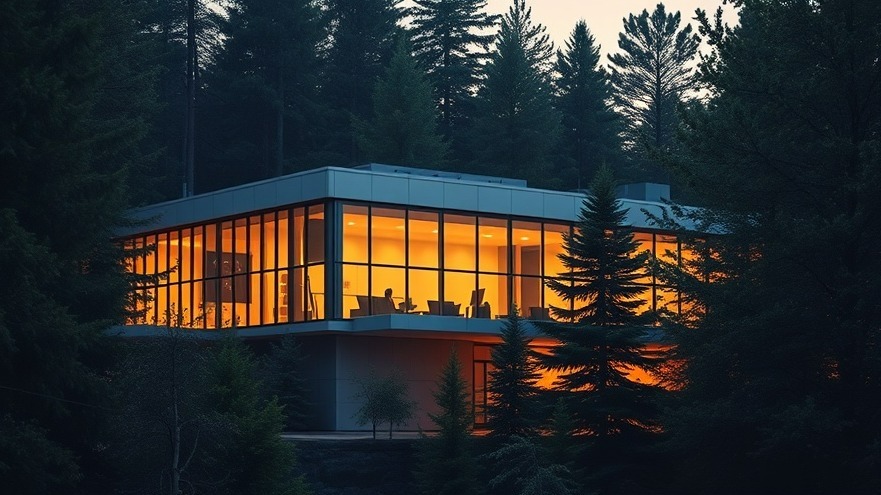
Creating a Supernatural Workspace: Insights from Sylvia Richards’ Design
In the verdant landscapes of Lebanon, New Hampshire, a striking architectural endeavor illustrates the merging of nature and functionality in workplace design. Created for the biotech company Adimab, the new research facility designed by Sylvia Richards Practice for Architecture not only serves as a state-of-the-art workspace but also offers insights that digital nomads can incorporate into their own home office setups. With a unique blend of mass timber and reflective materials, this building embodies both aesthetic appeal and practical utility—principles that are vital for those seeking to cultivate an effective remote workspace.
Mirrors and Timber: The Power of Materials
The design of the Adimab research facility integrates massive timber—specifically cross-laminated timber (CLT)—to enhance the building’s structural integrity while providing a warm, natural aesthetic that can positively influence productivity. Digital nomads can mirror this principle by incorporating natural materials into their workspaces. Wood, for instance, not only enhances the ambiance but also creates a calming effect, fostering a peaceful environment conducive to focused work.
Furthermore, the mirrored panels wrapping around the base of the building offer a unique insight into workspace design. These reflective surfaces challenge traditional notions of space, creating an illusion of lightness that allows the structure to blend seamlessly with its forested surroundings. For those working from home, adding mirrors can open up the room, make it feel more expansive, and harness natural light—key components that can enhance mood and motivation.
Vertical Versatility: Going Tall for Space Efficiency
Rather than sprawling outwards, the new Adimab facility showcases a three-level design which allows it to maintain a compact footprint while maximizing usable space. This vertical approach provides a crucial lesson for digital nomads looking to optimize small living spaces. By thinking vertically and adding shelving, multi-functional furniture, or even lofted beds, individuals can maintain a clutter-free environment conducive to creativity and productivity in their home offices.
Welcoming Nature: Integrating the Outdoors
The new facility’s design respects and incorporates the surrounding natural landscape, strengthening its connection to nature—a vital aspect for digital nomads often tethered to screens. The building features large windows framed in white oak and aluminum, allowing natural light to flood the workspace while offering views of the serene outdoors.
Creating a visible connection to nature can significantly impact mental well-being and productivity. Digital nomads are encouraged to position their workspaces near windows or to invest in plants that bring a piece of the outside in. Incorporating greenery not only beautifies the space but also improves air quality and has been shown to reduce stress!
Conclusion: Your Workspace Can Be Transformative
The transformative design of Sylvia Richards’ Adimab research facility serves as an inspiring template for those looking to create or enhance their remote work environments. By considering materials that connect with nature, optimizing space vertically, and incorporating reflective elements, digital nomads can cultivate workspaces that energize and inspire productivity.
If you’re ready to elevate your home office, think about the features that bring you closer to nature and create a layout that feels open and inviting. Let these architectural choices guide you in carving out a workspace that not only meets your needs but also enriches your daily experiences.
 Add Row
Add Row  Add
Add 




Write A Comment